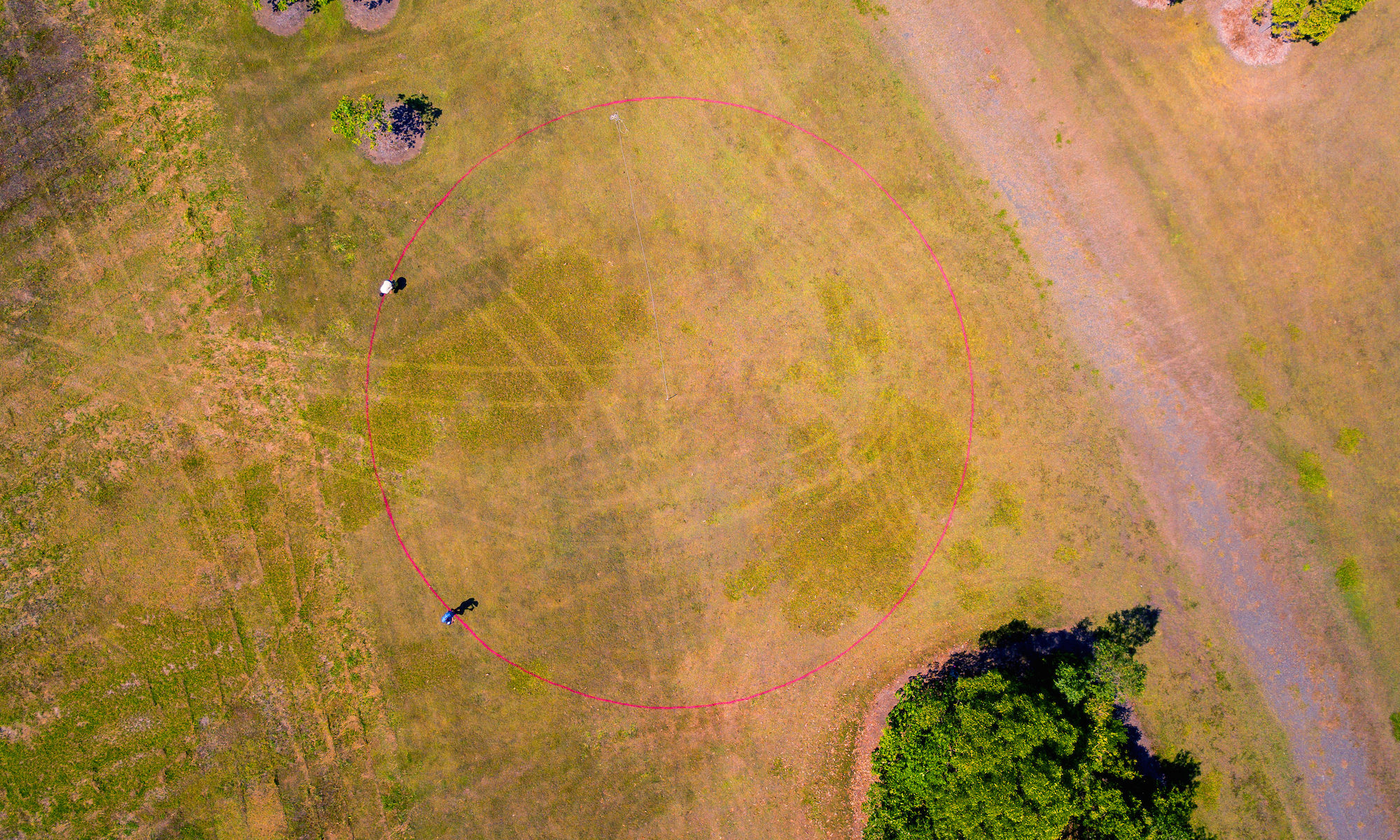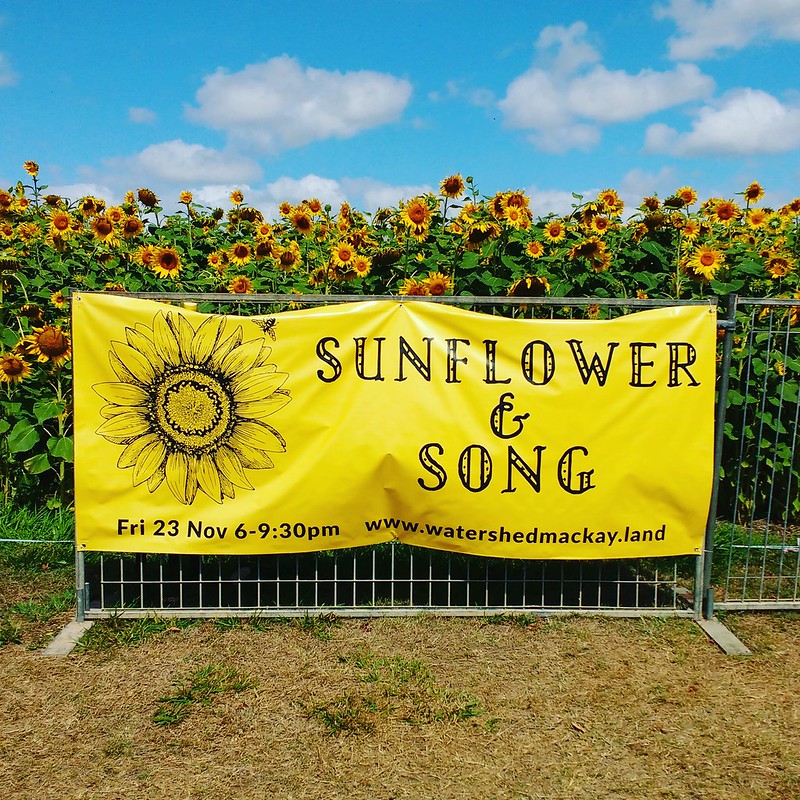
In the evolution of any botanical project, things live and die. Different species have different lifespans, and each has its moment to shine before moving aside to make space for the others.
Over the course of this year, the stars of the Watershed Land Art Project have been legumes (like cowpea, vetch, lucerne, and the wonderfully named dolichos lablab) as well as cover-crop plants like fenugreek and buckwheat.
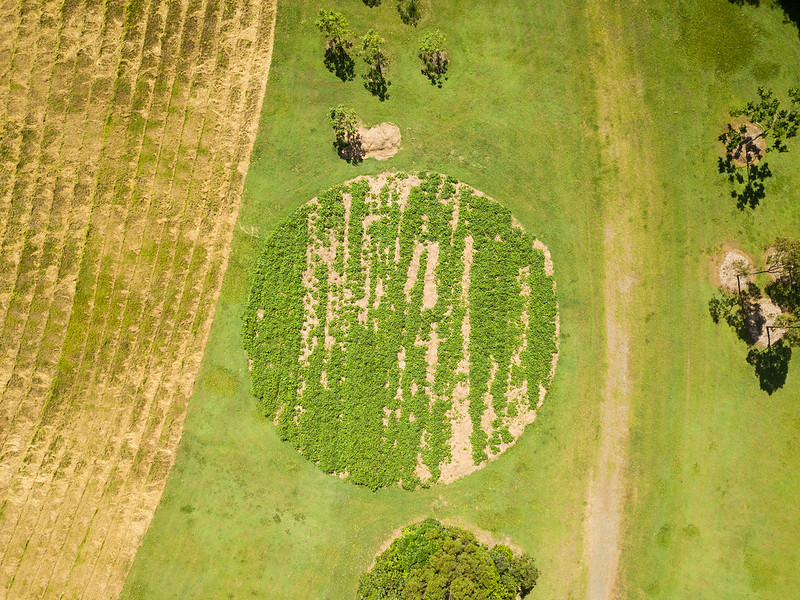
All these species lasted a season and were then mulched back into the earth. This cycling is a way of working with plants to improve the soil (particularly building nitrogen and organic matter and reducing compaction) in preparation for the main event: our dual crop of sugarcane and sunflowers.
In fact, while sunflowers attract a lot of attention, the sugarcane is the heart of the matter. With over 2000km of sugarcane growing along the Queensland coast adjacent to the Great Barrier Reef, and much of it happening in monoculture systems, there has been intense pressure for the industry to reduce its environmental impact.
Growing sugarcane as a monoculture requires chemicals – artificial fertilizers and bio-cides. More chemicals in the system means more floating around in the run-off that inevitably washes out from farms, into creeks and out to the reef.
So The Beacon – our 30 metre diameter plot at the Mackay Regional Botanic Gardens – is a mini-demonstration farm showing how sugarcane can be grown as a polyculture. Sharing space with the Botanic Gardens means that The Beacon is a work of public art – available for the inspection and pleasure of the public at any time of the day or night.

When a project takes 18 months to evolve, opportunities present themselves for seasonal celebrations. Planting becomes a ritual and a pleasure that kids can be part of. Singing and dancing and feasting and talking are re-integrated with the processes of agriculture. And the moment of harvest – tapping into centuries old human traditions – becomes a chance to let your hair down and reflect on what has been achieved.

That’s why the sunflower harvest event was so important for the Watershed Land Art Project. The sunflowers had finally burst into full bloom. So many different groups and individuals have been involved in building The Beacon – and now they all came together under a big full moon on 23 November 2018.
Here’s how it went:
As folks were arriving (about 6pm, towards sunset) the wonderful Zenith Rhythms started to play on the amphitheatre stage. People laid out their picnic blankets and their folding chairs and got settled in.

At half past six, Yuwibara Elder Veronica Ah Wang took to the stage and invited the crowd (about 250 people!) to move up to The Beacon. Uncle George Tonga had organised a smoking ceremony, and everyone passed through the fragrant smoke on their way up the hill.
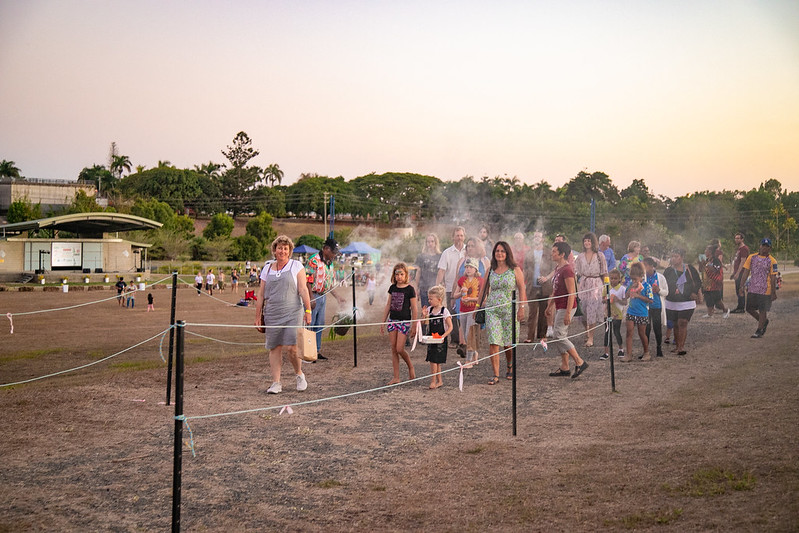
When the crowd arrived, the Diranga Gangali group led by Aunty Deb Netuschil “danced us in” to the event, emerging from the blooming sunflowers to tell stories in movement and song about the Yuwibara people’s histories, and the animals of this country.

Then came the time to harvest the sunflowers. We performed Kim’s “Harvest Song” accompanied by ukuleles and local singers. Our farmers stepped forward, teaming up with a gaggle of local kids. The farmers cut the stems, one at a time, handing them to the children. Each child slowly moved through the crowd handing out the flowers. This ritual continued until everyone had at least one sunflower.
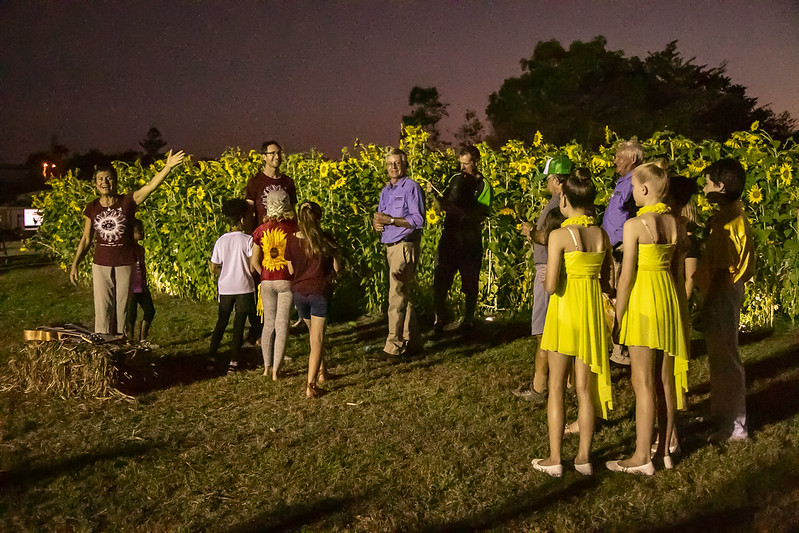
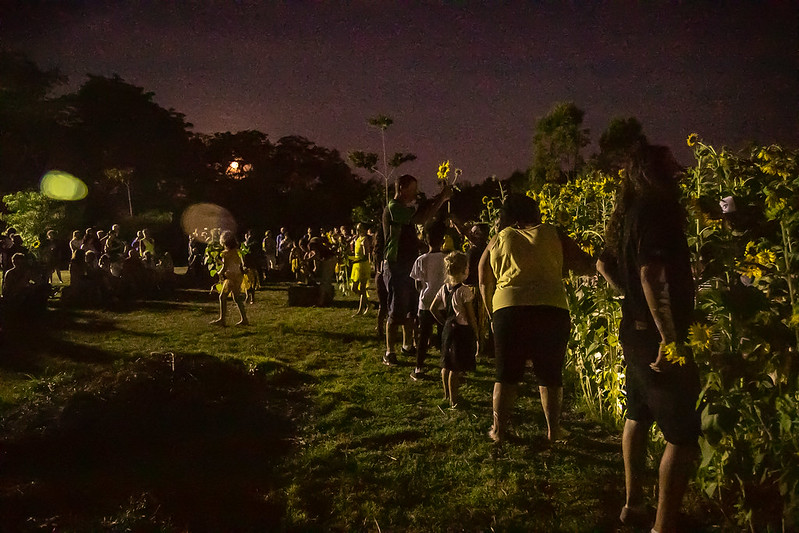
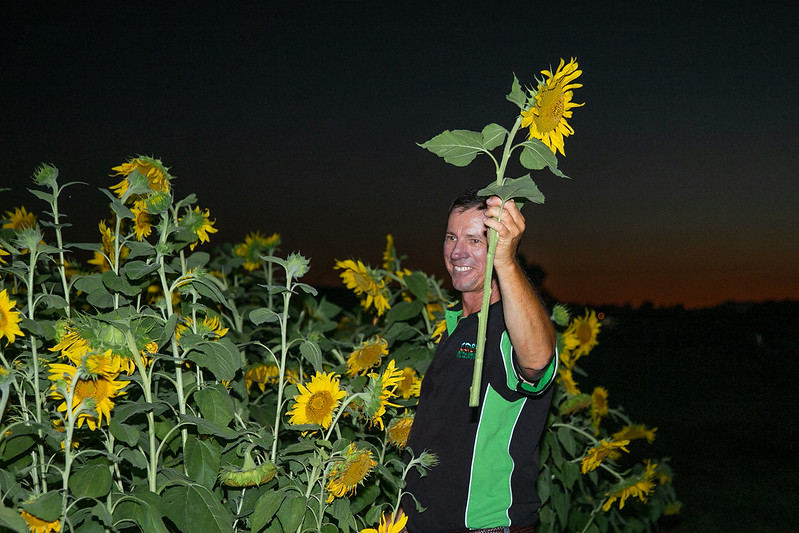

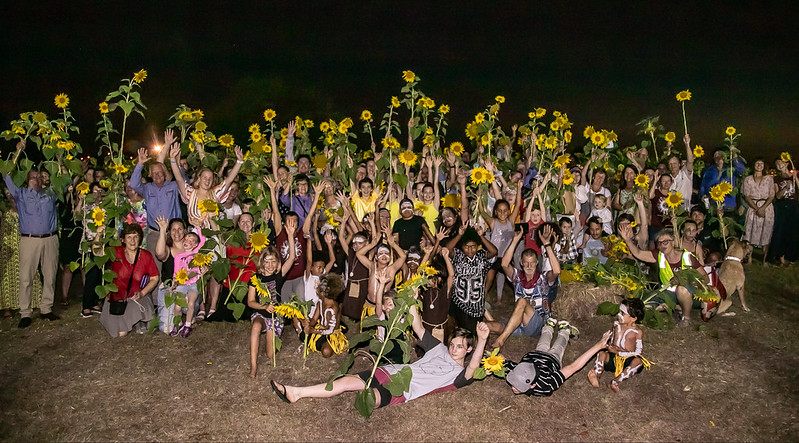
The Diranga Gangali Dancers then led us back down to the amphitheatre where we projected a joyous slideshow put together by Cherrie Hughes, showing how The Beacon has evolved throughout 2018, from depleted soil to fecund farm.
On marched the Sakwolo Islander Dancers, who took to the stage in a new set of glowing white outfits in a riotous celebration choreographed by David Tass.


The evening moved into a soil education mode, with a presentation by Katrina Dent from Reef Catchments, who linked Sunflower and Song to the Healthy Soil Symposium that had taken place that day. Our public discussion about the relationship between soil health and the Great Barrier Reef continued with a performative dialogue between regenerative farmers Simon Mattsson and Gary Spotswood.
This was reinforced by a screening of the documentary film Sunset Symphony in the Sunflowers (2017), which demonstrates how cultural and agricultural practices can work together for environmental benefit.
The evening was rounded off by an intimate solo musical performance by Woodbridge – after which the crowd moved off into the night, and we began to stack up the hay bales and pack up the bunting.
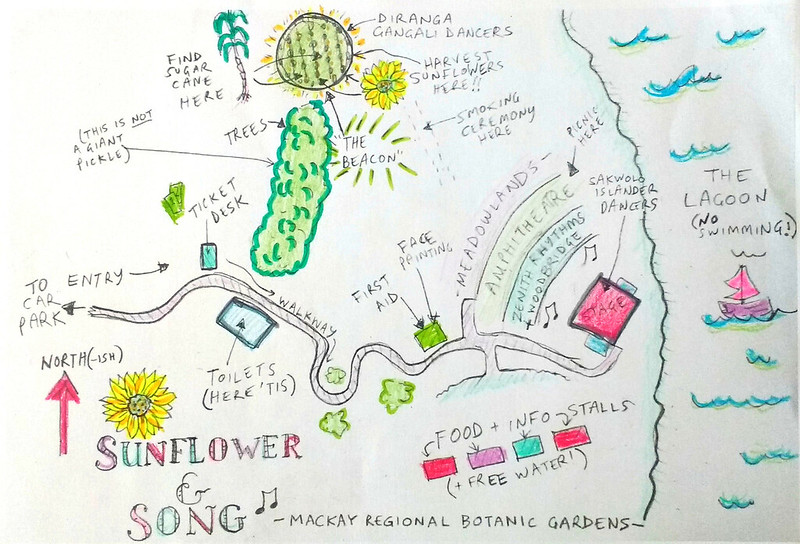
Sunflower and Song was marked by three layers of “activation”. The space was activated (the amphitheatre, the botanic gardens, The Beacon) with movement across the site. People were activated (farmers, local traditional owners, Australian South Sea Islanders, natural resource managers, council staff, artists, food producers and cultural producers). And there was an activation of biodiversity – not only visible above ground, with the sunflowers and sugarcane and the bugs and bees, but also underground, with the worms and nematodes and fungi and microbes.
It has been a privilege to learn about all these plants, places and people. Mackay is home to extraordinary potential, and at Sunflower and Song we had a small glimpse of that.
